Video Cards For Graphic Designers
The best graphics cards in 2021
Included in this guide:
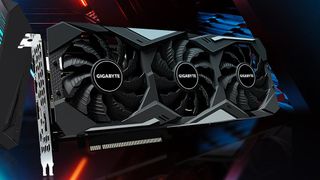
The best graphics cards allow you to play games at 1080p or even 4K without performance struggling. But even if you're not a gamer, you might want a more powerful graphics card in your PC to allow you to open, render and edit high-resolution photos and videos, create complex digital artwork, and build 3D environments and models. The best graphics cards can help you do this faster, allowing you to speed up your workflow.
There are two broad classes of graphics cards. Consumer cards are usually created to play computer games. These can range in price from budget GPUs that cost less than £100, to cutting-edge monsters that cost over £1,000. Then the professional graphics cards. These are extremely powerful GPUs that, as the name would suggest, are aimed at creative and AI pros. These often come with eye-watering price tags.
In the past, creatives were best advised to invest in a professional GPU. However, these days many gaming and consumer graphics cards offer outstanding performance that comes close to that of professional GPUs, and for a fraction of the cost. While they don't quite match up to professional GPUs, they'll often do the job as a much more affordable alternative
Two major players in GPUs are Nvidia and AMD, whose processors are used in some of the best graphics cards produced by various manufacturers. Graphics cards featuring their processors tend to be in high demand and stock often runs out, so you move quickly if you spot a good price.
This guide rounds up some of the best graphics cards for everyone, with a mix of consumer and professional options for every budget. For in-depth buying advice jump down to the section on what to consider when buying a graphics card.
The best graphics cards available now
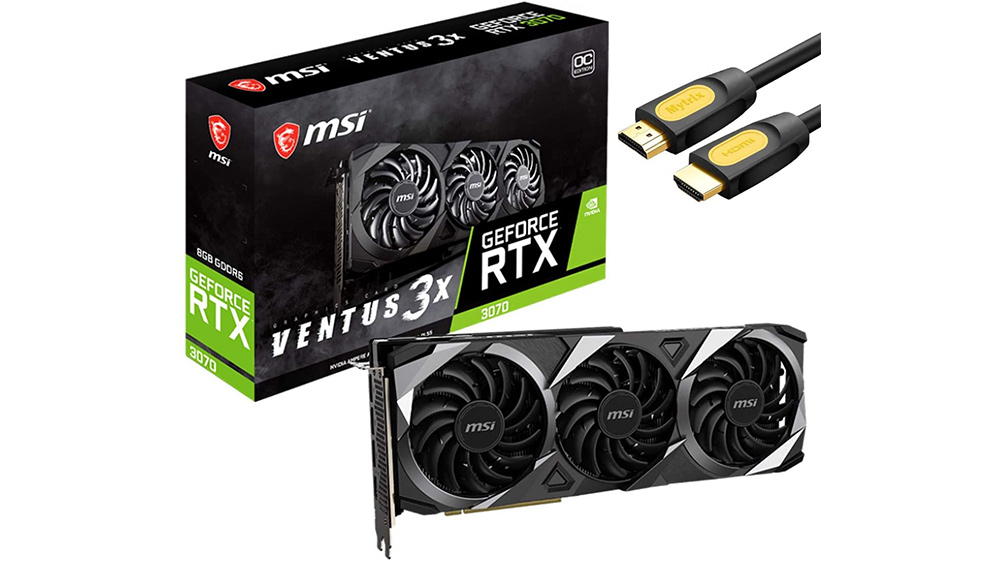

01. MSI GeForce RTX 3070
One of the best graphics cards for creatives
Specifications
Cores: 5,888
Memory: 8 GB
Memory Clock: 14 Gbps
Power Connectors: 2x PCIe 8-pin
Outputs: HDMI 2.1, 3x DisplayPort 1.4a
Reasons to buy
+GPU performance to beat +Up to 8k performance
Reasons to avoid
-Very expensive -Very large
This high-end MSI card with Nvidia's GeForce RTX 3070 is one of the best graphics cards readily available. It's expensive, but it's more affordable than many professional cards, and it can handle intensive creative workloads. For creatives looking for outstanding performance but at a slightly more accessible price, this option offers good value for money. Whether you're a gamer looking for the best experience at 4K resolutions or a creative who needs professional-grade performance without the huge price tag, this is definitely worth considering.
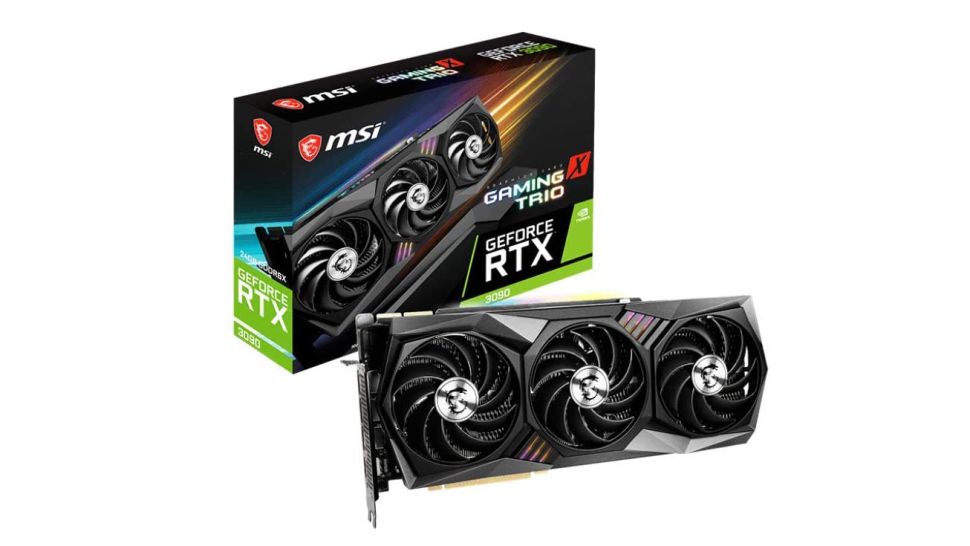

02. MSI RTX 3090 Gaming X Trio
The best graphics card for professionals
Specifications
Stream Processors: 2,176
Memory: 24GB GDDR6X
Memory Clock: 19.5Gbps
Power Connectors: 3 x 8-pin
Outputs: DisplayPort 1.4a x3, HDMI 2.1
Reasons to buy
+Incredibly powerful +Stylish RGB
Reasons to avoid
-Hugely expensive
For those who need the very best, the GeForce RTX 3090 Gaming X Trio, makes the existing RTX 3090 even more powerful. It raises the boost clock and slightly raises the power limit. Although it's still an RTX 3090, it has the cooling power to handle this GPU at its stock settings and enough drive to overclock it and make it even more powerful. For game creators, It's the icing on the cake for a GPU that makes small work of all PC games at 4K.
As another plus, instead of the unusual 12-pin power connector that Nvidia employed in its RTX 30-series Founders Edition cards, this behemoth has three standard 8-pin power connectors. It should offer the potential to get even more performance from this GPU.
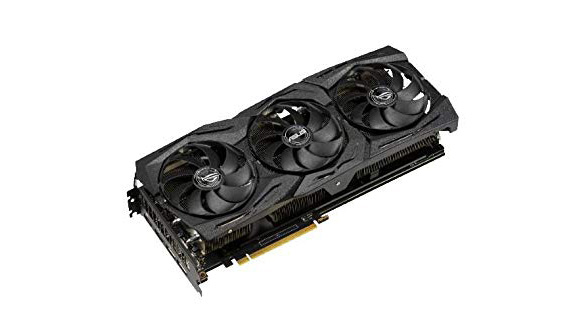

03. Nvidia GeForce GTX 1660 Ti
A modern mainstream card that replaces the GTX 1060
Specifications
GPU Cores: 1,536
Base Clock: 1,500
Boost Clock: 1,770 MHz
GFLOPS: 4,608
Memory: 6GB GDDR6
Memory bandwidth: 288GB/s
Reasons to buy
+Very affordable +Solid 1080 and 1440p performance
Reasons to avoid
-Not for 4K gaming -Modest memory bandwidth
The Geforce GTX 1660 Ti is a much more affordable Nvidia graphics card than the pricey, high-end RTX series. It's based on the newer 12nm Turning architecture of the RTX cards, but without the ray tracing hardware.
It offers 6GB of GDDR6 memory and a modest 1,536 Cuda cores, but it's still capable of delivering excellent gaming performance at 1080p and 1440p. It also has plenty of grunt for accelerating plugins and filters in creative software. That makes it one of the best graphics cards for those on a lower budget. Some manufacturers, such as PNY, offer it in an extra short design that can squeeze into small PCs.
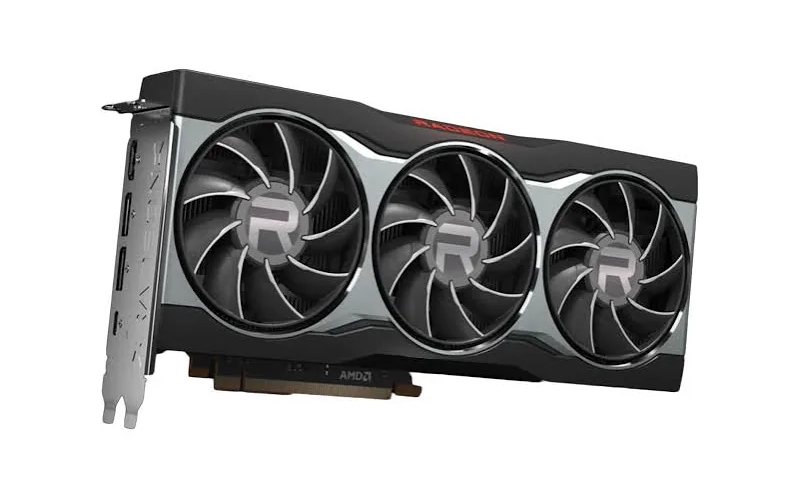
04. AMD Radeon RX 6800
A fantastic GPU from AMD
Specifications
Stream Processors: 3,840
Core Clock: 1.82 GHz (2.10 GHz boost)
Memory: 16GB GDDR6
Memory Clock: 16Gbps
Power Connectors: 2 x 8 pin
Outputs: DisplayPort 1.4 with DSC, HDMI 2.1 VRR and FRL
Reasons to buy
+Excellent performance +Finally, AMD ray tracing
Reasons to avoid
-Divisive design
AMD is gunning for Nvidia's crown when it comes to high-end performance in graphics cards, and the battle between the two companies means that both are now releasing powerful graphics cards at more competitive prices.
The AMD Radeon RX excels in both gaming and creative scenarios, including ray tracing (new for AMD graphics cards). Performance that beats the RTX 3070, while costing less.
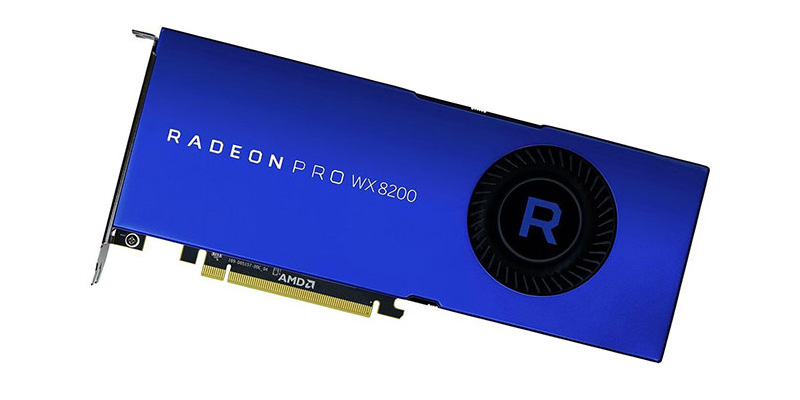
05. AMD Radeon Pro WX8200
A professional-grade GPU from AMD
Specifications
GPU Cores: 3584
Base Clock: 1200MHz
Boost Clock: 1,500MHz
GFLOPS: 10,075
Memory: 8GB HBM2
Memory Bandwidth: 512GB/s
Reasons to buy
+Outpaces similar Quadros +Fast
Reasons to avoid
-No Cuda support -Expensive
This nifty professional-grade graphics card is another bid to steal some of Nvidia's thunder, bringing the performance of AMD's higher-tier WX9100 card to a tastier price point (relative, to the generally much higher pricing of Radeon Pro and Quadro cards).
The AMD Radeon Pro WX 8200 is still based on the Vega architecture, but has 3,584 cores, with 8GB of ultra-fast HBM2 memory to deliver some great performance in specific tests.
Depending on the tools you use, AMD cards may offer better performance. 3D animators who rely exclusively on Maya or Blender, for example, may benefit from choosing AMD over Nvidia, although we'd recommend further research and consideration of your own workflow before investing. OpenCL applications work great with AMD graphics cards.
06. AMD Radeon RX 5700
One of the best graphics cards from AMD for lower budgets
Specifications
Stream Processors: 2,304
Core Clock: 1,465 MHz (1,725 MHz boost)
Memory: 8GB GDDR6
Memory Clock: 14Gbps
Power Connectors: 1 x 8-pin and 1 x 6-pin
Outputs: 1 x DisplayPort 1.4 with DSC, 1 x HDMI with 4K60 Support
Reasons to buy
+Excellent performance +Affordable
Reasons to avoid
-No ray tracing
The AMD Radeon RX 5700 proves that AMD can make graphics cards that aren't just incredibly powerful, but also offer excellent value for money. For the price, you're getting a mid-range card that can easily handle the latest games at 1080p and 1440p at their highest settings, which means getting amazing graphics in your games is now more accessible than ever before.
If you're not a gamer, and want a GPU for creative work, then the RX 5700 is still a fantastic choice, thanks again to its balance between price and performance.
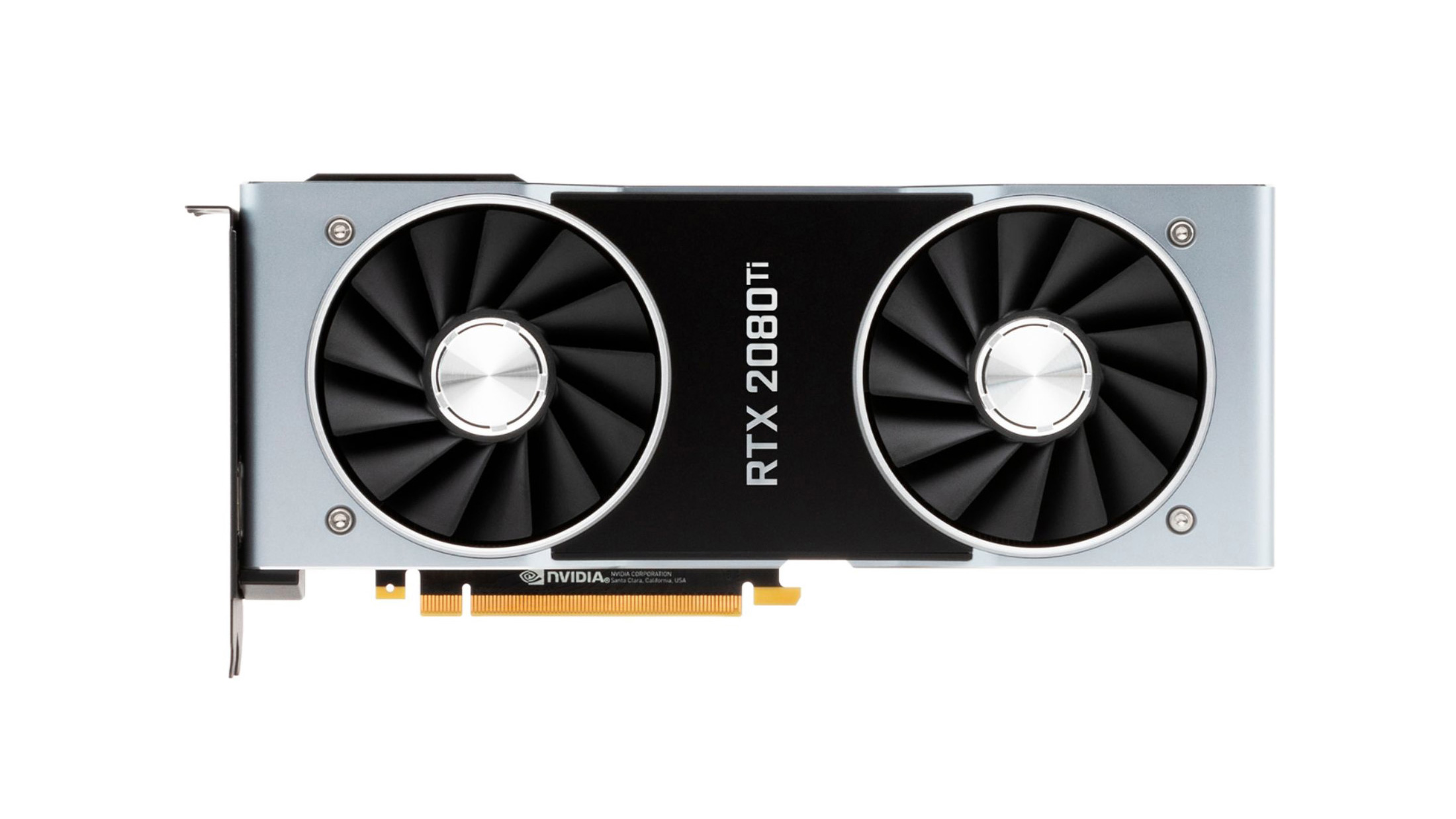
07. Nvidia GeForce RTX 2080 Ti
Still a brilliant GPU
Specifications
GPU Cores: 4,352
Base Clock: 1,350MHz
Boost Clock: 1,545MHz
GFLOPS: 13,448
Memory: 11GB GDDR6
Memory Bandwidth: 616GB/s
Reasons to buy
+Amazing for 3D +Future-proofing potential
Reasons to avoid
-Very expensive
For every generation, Nvidia releases a flagship model, and then a second, steroid-enhanced version of it with pricing that makes it an option for very serious users. The RTX 2080 Ti remains a brilliant GPU with 4,352 Cuda cores, almost double the ray tracing hardware and graphics processing power of the vanilla RTX 2080.
This card alone costs more than the average mid-range PC, but with some serious hardware behind it, the investment could be well worth considering, including for designers whose workstation doubles up as a gaming PC since Cuda and OpenCL performance has leapt forward along with gaming performance.
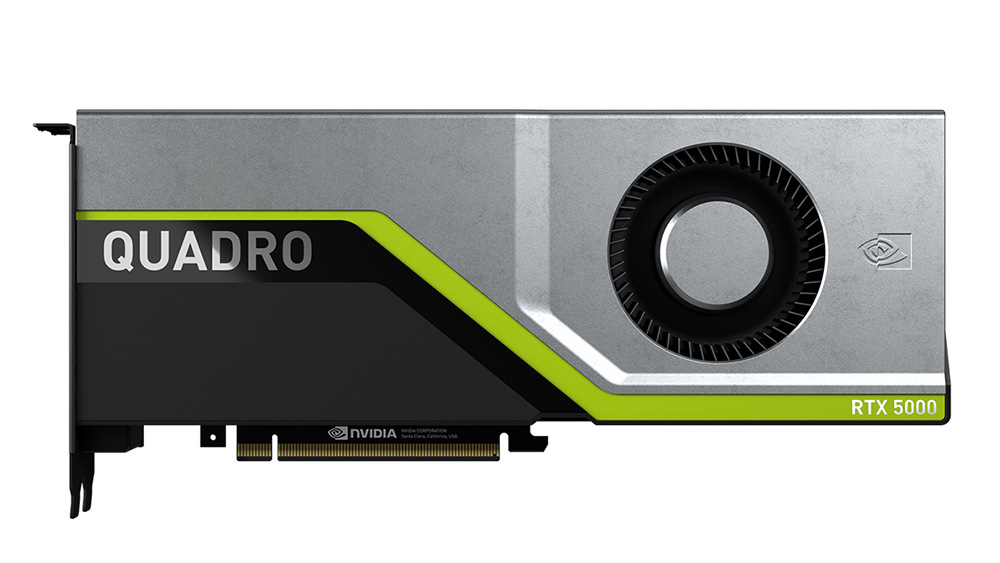
08. Nvidia Quadro RTX 5000
A powerful graphics card for creative software
Specifications
GPU Cores: 3,072
Base Clock: 1,620MHz
Boost Clock: 1815MHz
GFLOPS: 11,200
Memory: 16GB GDDR6
Memory Bandwidth: 448 GB/s
Reasons to buy
+Monstrous levels of application rendering +Massively improved Cuda and OpenCL compute performance
Reasons to avoid
-Very expensive
If you're not interested in gaming, the Quadros may be a better choice for creative software than Nvidia's GeForce cards. While the 8GB Quadro RTX 4000 is the more affordable choice, the 16GB Quadro RTX 5000 packs in a lot more performance, making it better for demanding users who are willing to shell out for serious performance.
It offers a lot more rendering power than the previous Pascal generation, driving Cuda and OpenCL applications to new levels and leaving other graphics cards looking comparatively weak.
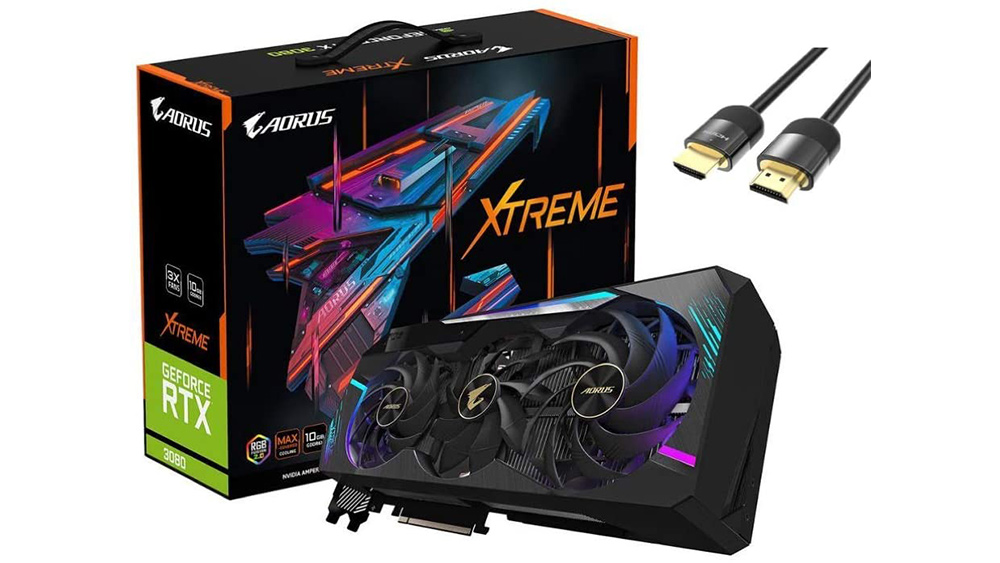
09. Gigabyte Aorus GeForce RTX 3080
Another one of the best graphics cards from Nvidia
Specifications
Stream Processors: 8,704
Core Clock: 1,845 MHz
Memory: 10 GB GDDR6X
Memory Clock: 19Gbps
Power Connectors: 2x PCIe 8-pin
Outputs: 2x HDMI 2.1, 3x DisplayPort 1x HDMI 2.0
Reasons to buy
+Excellent 4K gaming performance +Low temperatures
Reasons to avoid
-Still expensive
The Gigabyte AORUS GeForce RTX 3080 Xtreme Graphics Card comes with Nvidia's GeForce RTX 3080, which is one of the best graphics cards you can buy right now. The RTX 3080 brings all the advancements of Nvidia's latest Ampere architecture, including next-generation ray-tracing capabilities and 10GB of fast GDDR6X memory, which means it can easily handle 4K gaming.
For creative professionals, it's an excellent choice as well, with ray tracing and AI support that speeds up your workflow, be it rendering ultra-high-definition video, or creating complex and realistic 3D models. Best of all, it offers up to 80% performance increases over the last generation RTX 2080. The RTX 3080 is in such high demand, that it's hard to find in stock, but the Gigabyte AORUS might be your best chance.
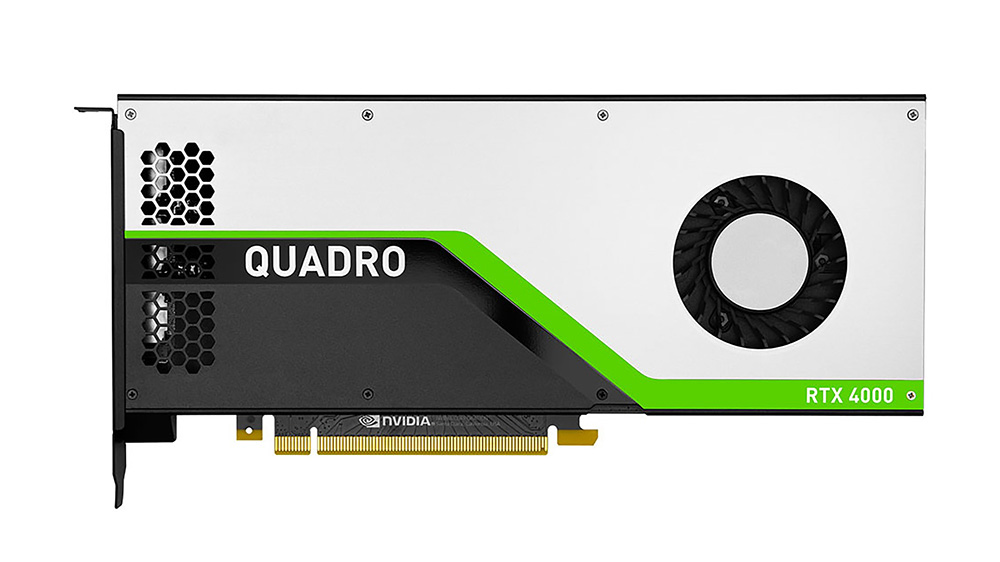
10. Nvidia Quadro RTX 4000
A reasonably affordable professional-grade graphics card
Specifications
GPU Cores: 2,304
Base Clock: 1,005MHz
Boost Clock: 1,545 MHz
GFLOPS: 7,100
Memory: 8GB GDDR6
Memory bandwidth: 416 GB/s
Reasons to buy
+Better for design than a GeForce card +Excellent with OpenCL and Cuda software
Reasons to avoid
-No good for gaming -Quite pricey for the spec
The Nvidia Quadro RTX 4000 is highly recommended for a workstation-class graphics card at a (just about) affordable price. It boasts excellent performance in design applications and comes in a svelte single-slot design that helps it fit into small cases. It also requires less power than a bulkier GeForce card
OpenCL and Cuda applications in particular absolutely fly on the Turing architecture, so the RTX 4000 will make a massive difference when working with creative software, plug-ins and filters, driving excellent performance when rendering images, 3D and video.
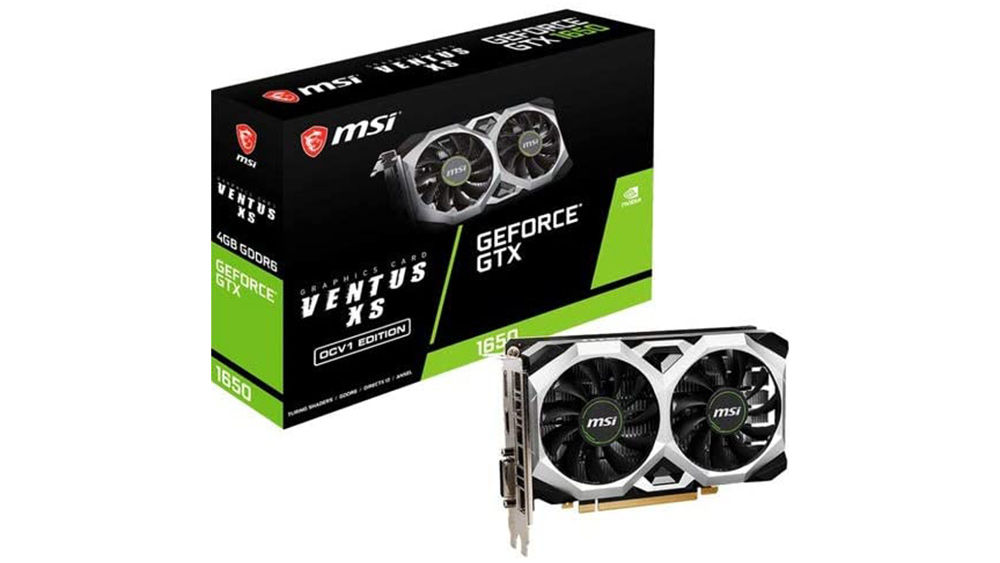
11. Nvidia GeForce GTX 1650
The best value graphics card
Specifications
GPU Cores: 2,048
Base Clock: 1,485 MHz
Boost Clock: 1,620 MHz
GFLOPS: 93.24
Memory: 4GB GDDR5
Memory Bandwidth: 128.1 GB/s
Output: DL-DVI-D x 1 / HDMI 2.0b x 1 / DisplayPort x 1 (v1.4)
Reasons to buy
+Best performance for money
Reasons to avoid
-Weak in comparison to others
The best graphics cards come with steep price tags, but the MSI GeForce GTX 1650 offers strong performance and a much more accessible price, making it one of the best graphics cards for beginners or those on a tight budget.
It comfortably wins the battle for performance over the Geforce GTX 1050, offering speeds almost 70% faster. With only 4GB of memory, it might struggle at resolutions beyond 1080p, but this tier of cards is about solid frame rates at HD resolution anyway, rather than 4K.
The best graphics cards: What to consider
Graphics cards (or GPUs) serve two roles in modern computers. In games, they accelerate 3D visuals, using their under-the-hood hardware power to determine the frame rate and resolution for the visual effects, whizz-bang explosions and pyrotechnics we've come to expect in modern games.
For digital creatives, including graphic artists, designers, illustrators and 3D professionals, the same hardware can dramatically boost rendering times in tools such as Adobe Creative Cloud (both Premiere and Photoshop), Blender, Maya and 3DS Max – at least in specific parts of the software, such as when applying certain plugins, filters and effects. A powerful graphics card can make a huge difference with some tools, with some effects unable to run on a CPU alone.
It's also worth noting that for each graphics card, there is a generic reference model, which often isn't for sale. Each manufacturer (MSI, Asus, Gigabyte, and so on) will sell their own versions of each card, which will all look slightly different.
Quadro vs GeForce vs Radeon vs Radeon Pro
Nvidia and AMD make two kinds of graphics cards that are roughly aimed at either gaming or design use. For Nvidia, you probably already know the GeForce gaming brand, while its Quadro cards may be better suited for creative professionals. AMD has Radeons for gaming and Radeon Pro for creators. The professional-grade cards tend to cost a lot more.
The higher-priced Quadros and Radeon Pros offer the same underlying design, architecture and similar specifications, but with some crucial differences. Quadro and Radeon cards have certified drivers. That means they have been tested for compatibility with specific software, offering better performance with design software in certain circumstances, and are (theoretically) less likely to run into issues.
They have ECC memory for extra precision and sometimes they run at lower clock speeds, meaning they have lower power requirements and thermal demands. If your livelihood depends on your design work and you want absolute reliability, you may want to consider a Radeon Pro or Nvidia Quadro.
Another difference you'll find is how the two classes of graphics cards are manufactured. With gaming cards, Nvidia and AMD produce and sell reference designs, but a long list of other manufacturers, including Asus, MSI, Zotac, EVGA and Sapphire, sell variations on the reference specification with different cooling systems and faster clock speeds, but generally always the same core design. For Quadro cards, Nvidia works with a single manufacturer – PNY – to produce all its hardware.
The best graphics cards: Jargon buster
Reviews of the best graphics cards come full of jargon used to specify the performance you can expect. The key specifications often quoted are memory (capacity, bandwidth and speed), the number of cores (basically the guts of the hardware), and the card's clock speed (in MHz).
These specifications vary between GPU generations and across the various tiers, and the cores in Nvidia and AMD cards aren't the same. Nvidia uses the term Cuda cores while AMD refers to GCN cores. That means AMD and Nvidia cards cannot be compared in that sense.
The best graphics cards: How to pick the right one for you
There are some basics to consider when shopping around. The higher resolution you're are working at (or gaming at) the higher your memory needs. If you intend to work with 4K resolution or with larger textures, you need a graphics card with more memory – 8GB or more is now common on the higher tier cards.
The faster the performance of your card, the better detail and more advanced graphical effects you'll be able to switch on in games at higher resolutions. The sweet spot for fluid performance is 60fps, but if you've invested in a 144Hz display, you'll be working your graphics card even harder to keep up.
The number of cores determines the overall rendering power of a card. These vary dramatically across the various price and performance tiers, from entry level £100 cards to £1000+ behemoths.
The clock speed of the graphics card is quoted as a base figure. Similar to the Turbo mode on Intel CPUs, when a graphics card is under heavy load it will run at a higher clock speed for better performance until it hits a predetermined maximum, which is in place to avoid overheating.
Don't forget to consider the display(s) you work with, and the outputs of the graphics card you buy. All modern graphics cards use digital video outputs only, either HDMI or DisplayPort (which may be either a small square-ish miniDP connector or a big D-shaped connector).
For 4K or 5K displays, all graphics cards now support at least the DisplayPort 1.4 and HDMI 2.0 standards that offer the bandwidth needed for 60hZ refresh rates – which was a serious problem on older graphics cards when higher-resolution displays first became a mainstream proposition. When 8K displays finally become more realistically affordable, this same problem will rear its head again.
Lastly, while it may be obvious to some, the single biggest differentiator of performance in graphics cards is the hardware generation of the series of cards, always codenamed for reference. Nvidia names its cards after scientists – Pascal, Turing, and so on, while AMD is a little more obscure, with Polaris and the newer Vega architecture currently on the market.
Nvidia and AMD produce a new series of graphics card roughly every two years. When a new generation comes out, it raises the bar in all technical areas – more cores, more memory, more bandwidth and more features, often squeezed into the same power and thermal demands of the previous generation.
For the best possible performance and best future proofing, only look at the newest cards.
Related articles:
- The best USB flash storage for creatives
- The best monitors for photo-editing right now
- USB sound cards: 5 best buys
- The best WD My Passport deals
A veteran from the days of the 8-bit ZX Spectrum, Orestis is always interested in the fastest, slickest way to make computers do new and exciting things.
Related articles
Video Cards For Graphic Designers
Source: https://www.creativebloq.com/features/best-graphics-cards
Posted by: mcculloughhimper.blogspot.com

0 Response to "Video Cards For Graphic Designers"
Post a Comment